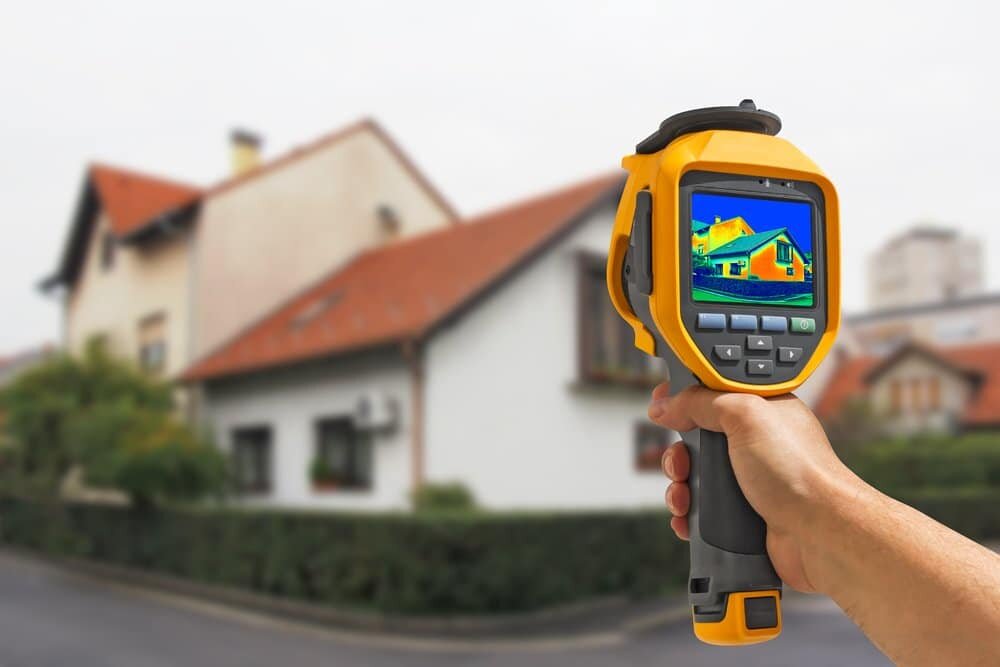Solar energy. Wind farms. Sustainability. They are all words that have become common parlance in today’s society. Whether you believe in climate change or not, there is something to be said for trying to be as energy efficient as you can be. And with technology comes new opportunity. Yet, although many of us want to make our home’s as energy efficient as possible, far too few of us give consideration to our garage door systems.
The fact is, if you live in a place like Akron or Canton, Ohio, you can expect some sweltering summers and cold, cold winters (much like we are having now!). If your regional climate features wild swings in temperature and humidity, you need to insulate your garage. Even better, energy efficient garage door systems also help you keep power usage low.
Do you use your garage as a workshop or entertainment room? Not only do you want to stay comfortable, but you want to conserve power. If you regularly use a heater or air conditioning unit in your garage, the last thing you want is a poorly insulated space leaking your temperature-controlled air outside. An eco-friendly garage door could be just what you need to maintain a comfortable temperature while keeping your energy bill low.
A Closer Look at Energy-Efficient Garage Doors
So, what about the garage door? The first thing you want to consider is insulation. Generally, insulated garage doors utilize polystyrene or polyurethane foam. There is a formula, something referred to as the “R value’, that governs how thick insulation should be, whether sprayed on or pre-installed with the panels. The R value represents a combination of the insulation properties of the door material and the type of insulation used inside the door, if any has been used.
Not only does insulation help to strengthen the door, it also makes it less susceptible to damage. Do you have that game room going in the garage? Because insulation also offers some measure of soundproofing.
When you shop for an energy-efficient garage door, you will generally find three different insulation options.
- Single-layer garage doors: These types have no insulation. If you don’t care at all about climate control or if your garage is not attached to your home, these might be a viable option.
- Double-layer garage doors: Standard polystyrene insulation.
- Triple-layer garage doors: Thicker polystyrene or polyurethane insulation.
For energy efficiency, you will get the most bang for your buck out of tripe-layer garage doors. For our friends and neighbors looking for an energy-efficient garage door in Canton, Ohio, we would recommend keeping that bitter cold out with a triple-layer garage door.
What About Energy Consumption?
Energy bills are certainly no one’s favorite thing. For many households, they can be a significant financial burden. That’s why people spend a lot of time and energy on saving as much money on their power bills as possible. One of the best ways to do this is by using energy-efficient technology. Energy-efficient systems consume less energy without compromising on performance. In some cases, you may even get a superior level of performance for even less energy. From LED bulbs to energy star-rated products, there is plenty you can do to lower your utility bill.
Which part of your garage door system uses the most power? Likely, your garage door opener. Bet you did not know that your garage door opener consumes power even when you aren’t using it. That’s right. According to this Cornell study, standby garage door opener power costs the average homeowner $200 per year. That may not sound like much, but consider you are paying that money for what is essentially nothing. You are literally lighting a match to two $100 bills. Does that sound good? Nope, we agree. But the good news is there are plenty of energy efficient garage door opener options on the market.
Companies like Chamberlain offer sturdy, reliable, next gen energy efficient garage door openers. And even better, these energy-efficient garage door systems are not appreciably more expensive than standard openers. Granted, the more features you want, the more you will pay, but you can get a base opener that won’t have you burning money. And you you won’t have to pay an arm and a leg for it.
Looking at Efficiency from a Holistic Perspective
Your garage is comprised of many different components. From structural aspects such as the walls and ceilings to mechanical aspects, such as the garage door opener and tracks – there’s a lot to consider. Let’s take a look at the garage door. What materials are used in its construction? If you choose an eco-friendly garage door that does not stand up to the elements, that’s a problem. Fortunately, garage door construction has come a long way. You can now get reliable, long-lasting and energy efficient garage door systems.
Even common garage door types can be born of standard materials. Take steel as one example. There is nothing wrong with recycled steel. Wood garage doors can also be sustainable, but you have to be careful. You don’t want to source a wood garage door with a supplier who does not harvest sustainably. Fortunately, there are plenty of eco-friendly suppliers out there who support replanting trees in place of harvested timber. A little due diligence should uncover them quickly.
Questions to consider include:
- Does the garage door feature weatherproofing or insulation?
- Is sustainability important to the source provider or supplier?
- Do they use high-quality parts to improve overall lifespan?
- What kind of sustainable building materials do they use?
Of course, there are plenty of other considerations. Does the garage door give your home more curb appeal? Does it require you to make security compromises. You want an efficient garage door, but not at the expense of safety. The good news is there are a lot of options out there. Need help figuring out the one that is right for you? Contact Prestige Door today at 330-470-0594

